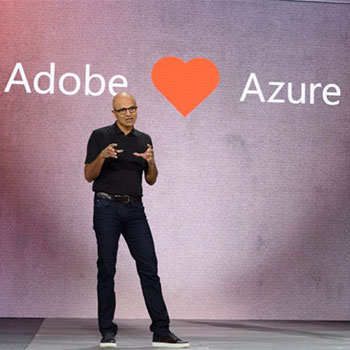Microsoft and Adobe expand partnership with deeper PDF integration across Office 365 versions
Microsoft and Adobe are cozying up even closer, with a series of new announcements including deeper integration of Adobe PDF capabilities into Office 365 apps.
The Redmond company has come a long way since it introduced its would-be PDF killer, the XPS file extension, more than a decade ago. Microsoft wasn’t able to shift the tides, and the PDF remained king of its category. But for a long time it still wasn’t always seamless to create PDFs out of Office documents.
Today’s announcement makes it possible to make PDFs directly from the ribbon of commands on programs like Word, Excel and PowerPoint, not just on desktop versions, but on mobile and online editions as well. Users will also have access to Adobe PDF capabilities through SharePoint and OneNote on any device.
“We’re thinking a lot about how work is shifting across these devices and these platforms, and so we are moving far out of this desktop-only paradigm, into making it easier for people to get their work done wherever they are,” said Mark Grilli, vice president of product marketing for Adobe’s Document Cloud, said in an interview with GeekWire.
This sentiment jibes with the general outlook over in Redmond, where Microsoft’s retreat from developing its own mobile operating system has led the company to focus on an OS- and device-agnostic approach when developing its flagship offerings like Office 365, which now boasts 135 million monthly active users.
The deeper partnership also means users will be able to merge multiple files together into PDFs, search PDFs and convert PDFs into Office files, all without leaving Office.
In addition to the PDF integrations, Adobe also announced that Adobe Sign, the company’s e-signature offering, will be embedded deeper into the Microsoft Dynamics sales management program and also integrate LinkedIn contact details.
Microsoft’s partnership with Adobe dates back almost two years now. In 2016, at Microsoft Ignite, the two companies announced the first set of partner relationships, making Azure the preferred public cloud service for Adobe’s cloud-based marketing software packages and Adobe’s Marketing Cloud product the preferred marketing service for Microsoft Dynamics customers.
Last September, the two companies announced Adobe Sign as the preferred e-signature technology within Office 365 and other Microsoft services. In exchange, Adobe is promoting Microsoft Teams, the company’s Slack competitor, to its Creative Cloud users as its “preferred collaboration service,” and made Azure its “preferred” cloud service for Adobe Sign.
Grilli teased even deeper ties between the two companies, saying they are “just starting on some of the things we’re doing,” but wouldn’t go any further than that.

